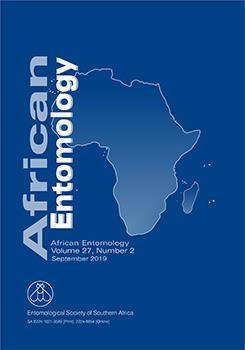A coleopteran insect, Trachyderma hispida, was collected from the proximity of ceramic factories in Khorshed district, Alexandria, Egypt, to elucidate the testicular damage elicited by heavy metal pollution. Bioaccumulation of heavy metals was estimated by using X-ray microanalysis. Histological and ultrastructure examination revealed various changes in germ cells in insects collected from the polluted region. The inducible histological alterations included: occlusion and collapsed follicles, disrupted cyst wall and necrotic spermatogenic elements. Ultrastructure changes implied abnormal chromatin condensation, ill-defined nuclear membrane, vacuolated cytoplasm, disintegrated nebenkern, deterioration of mitochondrial derivatives and degeneration of axonemes. In addition, agglutinated spermatids, and sperms with a double tail were noticed. The most noteworthy feature in spermatogonia and spermatocyte was the intra-tubular inclusion bodies. Histological and electron micrographs pointed out the structure of the parietal cell which functioned as a Sertoli cell. Adverse damage to these cells by ceramic pollution was reported. In conclusion, by using insects as bioindicators, ceramic production may impair reproduction.
BioOne.org will be down briefly for maintenance on 17 December 2024 between 18:00-22:00 Pacific Time US. We apologize for any inconvenience.
How to translate text using browser tools
4 October 2019
Spermatogenic Alterations in the Ground Beetle Trachyderma hispida (Coleoptera: Tenebrionidae) Induced by Ceramic Industrial Pollution
D.A. Kheirallah,
L.M. El-Samad
ACCESS THE FULL ARTICLE
It is not available for individual sale.
This article is only available to subscribers.
It is not available for individual sale.
It is not available for individual sale.

African Entomology
Vol. 27 • No. 2
October 2019
Vol. 27 • No. 2
October 2019
beetle
biomonitoring
histological and ultrastructure examinations
industrial pollution
testis





